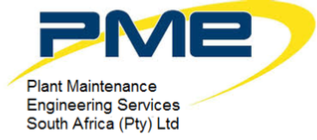





Today's state-
Moisture content is recognized as one of the main causes of variation in the electrical properties of insulating materials, both from a chemical and physical point of view. Even in small amounts, moisture can accelerate the aging process.
Under these circumstances, it is important to start initially at the factory with a dry insulation system and pure, dry and degasified dielectric liquid during transformer impregnation and the qualification tests.
Later, the same care must be taken during installation in the field and after every maintenance check, requiring exposure of the insulating system to the environment.
The PME DVF process, developed by PME Services (PTY)LTD Technologies, upgrades new insulating liquids and reclaims used dielectric oils through filtration, vacuum dehydration, degasification and clay treatment (when necessary).
PME DVF Systems include filters with a 0.5-
The PME Filters provide corrective treatment for removal of the products of oxidation, dissolved varnish and gums and other traces of chemical contaminants.
PME DVF Systems with High Vacuum Pumps provide fast and complete transformer dry-

Dehydration (Degas) System
The horizontal vacuum vessel can enlarge evaporation area efficiently. The heater, being placed before the horizontal vacuum vessel, becomes an evaporator. Thus the evaporation area of horizontal vacuum vessel is three times more than that of the vertical vacuum vessel. This innovation can dehydrate and degas effectively and efficiently. The optimal structure of the dehydration (degas) system enlarges the surface area of oil exposed to the vacuum system and extends the flowing distance of the oil in the vacuum system. Thus there has sufficient time to remove the moisture and gas from the oil by vaporization.
Filtering System
The filtering materials with variable apertures are made of specialized glass fibre. The sizes of the filtering fibre and aperture dwindle gradually in the different filtering stages. The impurities with different particulate sizes are filtered step by step. The capability of removing particulate matters and impurities is improved greatly by this method.




